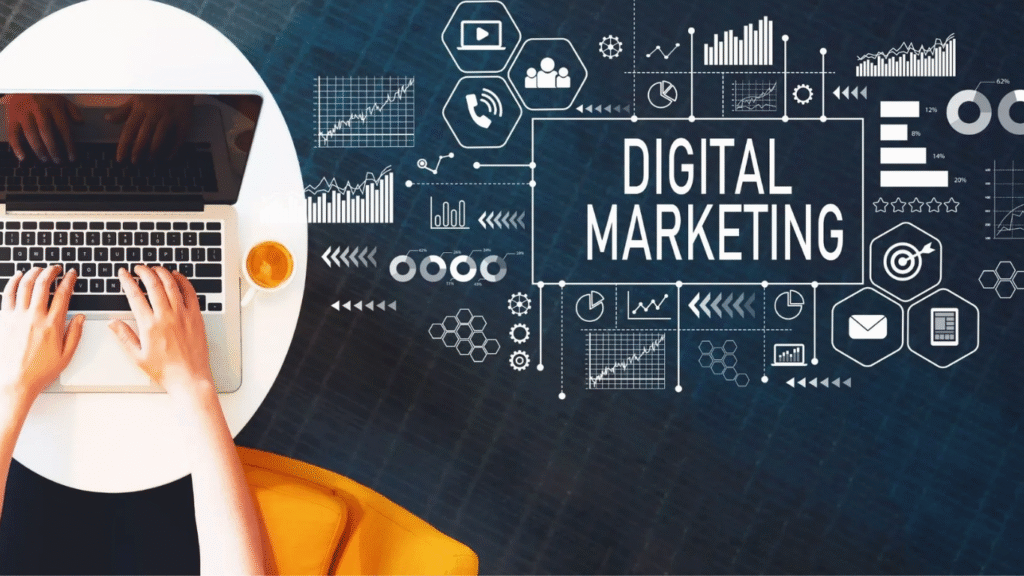What is Digital Marketing?
Digital marketing is the practice of promoting products, services, or brands using digital channels and technologies. Unlike traditional marketing (which relies on print, radio, or TV), digital marketing leverages the internet to reach and engage audiences through devices like smartphones, tablets, and computers. the key features of digital marketing are: Internet-based: Uses websites, social media, email, and search engines. Data-driven: Offers real-time analytics to track performance and optimize strategies. Highly targeted: Allows businesses to reach specific demographics and user behaviors. Types of Digital Marketing Here are six major types you’ll often encounter: Type Description Search Engine Optimization (SEO) Improves website visibility in search results organically. Content Marketing Creates valuable content (blogs, videos, etc.) to attract and retain users. Social Media Marketing Promotes brands via platforms like Instagram, Facebook, LinkedIn. Pay-Per-Click (PPC) Paid ads that appear on search engines or websites. Email Marketing Sends targeted messages directly to users’ inboxes. Mobile Marketing Reaches users through apps, SMS, and mobile-optimized content. TYPES IN BRIEF: 1)SEO- focuses on improving a website’s visibility in search engine results. By optimizing content with relevant keywords, improving site structure, and earning backlinks, businesses can attract organic traffic without paying for ads. SEO is a long-term strategy that builds credibility and trust. 2)CONTENT MARKETING: involves creating and sharing valuable content such as blog posts, videos, infographics, and guides. The goal is to educate, entertain, or solve problems for your audience, thereby building trust and encouraging engagement over time. 3)SOCIAL MEDIA MARKETING- involves using platforms like Facebook, Instagram, LinkedIn, and Twitter to promote products or services. Brands engage with audiences through posts, stories, reels, and paid advertisements. It’s a powerful way to build community, increase brand awareness, and drive traffic. 4) PAY PER CLICK- is a model where advertisers pay each time a user clicks on their ad. These ads appear on search engines like Google or on social media platforms. PPC offers quick visibility and is ideal for targeting specific demographics or keywords with measurable results. 5) EMAIL MARKETING- is a direct way to communicate with customers through personalized emails. It’s used for newsletters, promotional campaigns, and customer retention. When done right, email marketing can nurture leads and encourage repeat purchases. 6) MOBILE MARKETING- targets users on smartphones and tablets through SMS, mobile apps, and responsive websites. It’s highly personalized and often location-based, making it effective for real-time engagement and promotions. WHY DOES DIGITAL MARKETING MATTERS Digital marketing matters immensely in 2025 because it sits at the intersection of technology, consumer behavior, and business strategy. As more people rely on digital platforms for everything from shopping to entertainment, businesses must adapt to stay relevant. The rise of AI, voice search, and immersive technologies like augmented reality (AR) and virtual reality (VR) has transformed how brands connect with audiences. Digital marketing enables companies to personalize experiences, automate outreach, and engage customers in real time—all while being cost-effective and scalable. With marketing budgets tightening, teams are expected to do more with less, making digital strategies not just useful but essential for survival and growth Digital Marketing Strategies To succeed, marketers often combine multiple tactics into a cohesive strategy:

